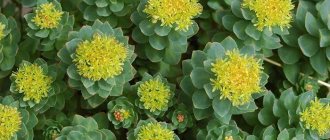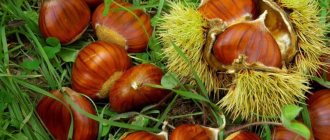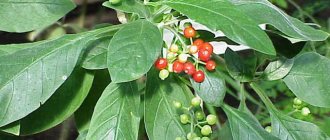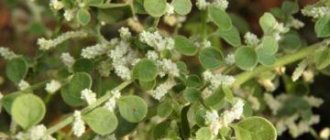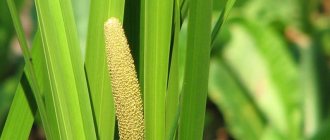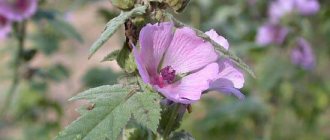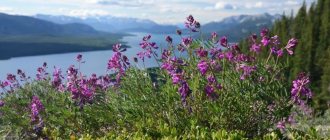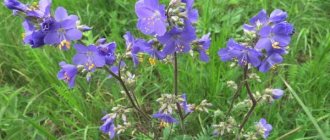Golden root or Rhodiola rosea is one of the most mysterious medicinal plants. It is believed that golden root was a favorite healing remedy among Altai shamans, which was kept secret. This was done not in order to hide the medicinal properties of the golden root, but so that this gift of nature did not become a means of profit, since elixirs made with the addition of this plant cost a fortune.
They knew about the beneficial properties of golden root in other countries: China, Greece, Tibet.
Morphological description
The rhizome is horizontal, powerful, covered with a brown (bronze) cork, and has thin adventitious roots. When broken, the root is white, has a bitter-astringent taste, and has a special aroma, similar to the smell of a rose.
Most often, the plant has several (10-15 pieces) non-branched erect stems, 10-40 cm high, less often there is only one stem. The leaves are alternate, sit on stems, have an oblong-ovate, elliptical or pointed shape with a whole or serrate-toothed upper part.
Flowering occurs in June-July, fruits reach maturity in July-August. The inflorescence is multi-flowered and has a corymbose shape. The flowers are yellow, unisexual, four-, less often five-membered. The fruits are erect, multi-leafed, green.
Propagated both by seeds and vegetatively.
Collection, preparation and reproduction
The root of Rhodiola rosea is harvested for future use (the plant is 3-4 years old). This is done between the end of July and September. The roots are dug up, thoroughly washed to remove soil particles in cool water, and cleaned of brown plugs and rotten, dry areas. Cut the rhizome into pieces, each 10 cm long, and dry them at 50 degrees in a dryer.
The finished raw material has a pinkish or white color when broken. If the root is brown in color at the break, it is unsuitable for use because it loses its beneficial properties. Store dry raw materials in canvas bags in a dark place. Shelf life – 3 years.
Most often, the plant is propagated by seeds: planted in late autumn or winter in a box with nutritious soil, providing good ventilation (expanded clay is placed on the bottom). The soil is pre-moistened with a weak solution of potassium permanganate and compacted a little. The seeds are evenly distributed over the surface and lightly pressed, covered with soil (2 mm layer), covered with film and placed on the balcony. In March, the box is moved to a warm, illuminated place, and within a couple of days shoots will appear. They can be replanted when two true leaves appear.
You can propagate a plant (which is at least 2 years old) by dividing the rhizomes into 2 parts, which are planted in prepared holes with humus; compost is also laid on top, leaving renewal buds on the surface.
Chemical composition
The root of the plant contains more than 140 useful elements, which determine the complex positive effect.
- Phenols and their derivatives: tyrosol, salidroside. Strengthen the circulatory system, protect blood vessels from narrowing. Prevents cholesterol oxidation;
- Carbohydrates: glucose, fructose, sedoheptulose, sucrose. Participate in energy metabolism;
- Organic acids: oxalic (stimulates gastric secretion and intestinal function),
- apple (normalizes digestion, improves the condition of blood vessels, improves vision and is involved in metabolism),
- amber (neutralizes free radicals, reduces uric acid levels, restores joint mobility, stimulates insulin production),
- lemon (increases appetite, stimulates cell renewal, activates the immune system);
Straight chain aliphatic alcohols and monoterpene hydrocarbons were found in the essential oil. The composition of the essential oil varies depending on where the plant grows.
The aboveground part of the plant is saturated with organic acids (malic, citric, oxalic, succinic), phenols and their derivatives, phenolcarboxylic acids (gallic, caffeic), coumarins, tannins, and flavonoids.
Beneficial features
Golden root (rhodiola) is characterized by many beneficial properties:
- is a powerful antioxidant and adaptogen;
- protects the body from the development of cancer and prevents tumor metastasis;
- increases blood pressure;
- improves heart function;
- fights pathogenic microorganisms;
- has an anti-inflammatory effect;
- promotes bile secretion;
- stops bleeding;
- restores the body after overwork, tones well;
- has a general strengthening effect and increases the body’s resistance to the influence of unfavorable environmental factors;
- has a neuroprotective effect;
- stimulates the central nervous system;
- maintains the energy potential of the brain at a high level;
- improves cognitive functions;
- accelerates the course of oxidative processes;
- accelerates wound healing.
Scientific research
Scientific research began in the 60s of the 20th century. In 1961, an expedition led by G.V. Krylov was carried out, during which scientists managed to find the plant in the taiga of the Altai Mountains. Based on research results, the plant was introduced into scientific medicine and began to be used in the form of a liquid extract with adaptogenic and stimulating properties.
Numerous studies have been conducted to study the effect of the plant on the central nervous system. Plant preparations change the bioelectrical activity of the brain and improve cognitive functions: by increasing resistance to stress factors, memory and the ability to remember information improves.
The positive effect of plant preparations has been reported to eliminate the side effects of psychotropic therapy for schizophrenia.
A number of studies have shown that roseola rosea can improve physical performance. An experiment conducted on animals (white rats) recorded a decrease in the rate of glycolysis, the amount of lactic acid in the muscles, the preservation of a high level of phospholipids in the muscles and liver, as well as blood sugar after 2 hours of swimming in individuals receiving the plant preparation.
The possibility of using plant preparations as hepatoprotectors is also being considered. The effectiveness of use as a therapeutic and prophylactic agent for liver damage induced by organophosphorus compounds has been proven in animals.
Common Questions
What are the dangers of an overdose of drugs from the plant?
The plant has a high stimulating effect on nerve fibers and the blood flow system, so it is necessary to use herbal remedies based on the plant no later than 5 pm. An overdose of herbal medicines can provoke the development of the following symptoms:
- headache and dizziness;
- tremor of the limbs;
- insomnia or increased sleepiness;
- a sharp increase in blood pressure index;
- tachycardia, arrhythmia;
- respiratory depression and bronchospasms;
- Quincke's edema;
- hyperthermic syndrome;
- skin rashes and redness.
Are the beneficial properties of the root preserved after heat treatment, for example in baking?
Rhodiola is not only a beautiful ornamental medicinal plant, but also edible. Green leaves and shoots are used in salads, and tasty and healthy compotes, jelly and decoctions are made from the roots of the plant. During heat treatment, all the healing properties of the plant are fully preserved. It is useful to use crushed rhizomes in the preparation of jams, marshmallows, sweets and baked goods. After eating such sweets, the healing effect of the body is noticeable.
Can children be treated with this plant?
For external use for diathesis, dermatitis and skin pathologies, infusions and decoctions can be used from 2-3 years of age, and for oral use only from 12 years of age to avoid the development of allergies in children.
Application
Rhodiola rosea is a powerful adaptogen that has a visible effect after the first use of the drug! But you can’t take plant preparations every day without reason. Constant stimulation of the body, even with herbal preparations, can lead to an effect opposite to the expected one.
Rhodiola is used for many diseases and pathological conditions, and is characterized by a whole range of pharmacological properties. The most common indications for the use of plant preparations:
- poor appetite;
- metabolic disorders;
- physical and mental fatigue;
- VSD;
- neuroses;
- asthenic condition after long-term illnesses;
- inflammatory processes;
- allergic reactions;
- radiation injuries (acute and chronic);
- reduced visual acuity;
- poor hearing;
- pulmonary tuberculosis;
- anemia;
- oncological diseases;
- bone fracture;
- menorrhagia;
- dysmenorrhea;
- amenorrhea primary and secondary;
- gynecological diseases (adnexitis, polycystic ovary syndrome, fibrocystic mastopathy);
- early menopause;
- impotence;
- oligospermia;
- late puberty;
- toothache;
- headache;
- gout;
- diabetes;
- conjunctivitis;
- angina;
- pyorrhea;
- diarrhea;
- wounds, skin lesions, rashes, abscesses.
Golden root is often used for men and women: it helps with impotence and is indicated for many diseases of the female reproductive system. Plant preparations enhance the functioning of the sex glands, stimulate the ovaries and are widely used in the treatment of early menopause. The plant has a positive effect on potency, and its effectiveness is higher than that of ginseng root.
It has been proven that the plant enhances the effect of cytostatics that cause necrosis of cancer cells: the membrane, core and parts of the cell are destroyed, which leads to its death.
Contraindications for use
Despite all the properties described above, golden root cannot be a panacea for all known diseases.
The plant also has contraindications, as well as medicinal properties, which can manifest themselves individually.
- People suffering from very high blood pressure and severe headaches should not use golden root. Also, one of the contraindications for use is a feverish state.
- Rhodiola rosea should be prescribed with caution to people under severe emotional stress.
- The drink is contraindicated for pregnant and lactating women, as well as children under 1 year of age.
In cosmetology
This unique plant has also found its application in cosmetology. Golden root extract has a positive effect on aging, sensitive skin and improves its overall condition. The rich biologically active composition allows the use of plant extracts in various creams to give them stimulating and adaptogenic properties, slow down the aging process of the skin, and increase resistance to adverse environmental factors.
Cosmetic preparations with golden root:
- normalize metabolic processes in the skin;
- improve energy metabolism in cells;
- accelerate skin regeneration processes;
- minimizes transepidermal fluid loss;
- increase skin barrier functions;
- slow down the aging process;
- reduce the level of depression.
The most popular cosmetics with golden root: day cream for sensitive skin from “Natura Siberika”, face cream “Clean Line”, day cream “Granny Agafya’s Recipes”.
Golden root for children
Radiola rosea is a strong psychostimulant. Its uncontrolled use can cause negative consequences in the developing nervous system of the child. Oral administration can only be done under the supervision of a pediatrician.
From the age of 8, lotions are allowed for conjunctivitis and periodontal disease. For this, decoctions with half the amount of root are used than for adults. The use of alcohol tincture is contraindicated for children under 12 years of age.
Golden root is prescribed to adolescents in the autumn-spring period to maintain immunity during exacerbation. Suitable for correcting hypotension.
Pharmaceutical preparations with Rhodiola rosea
Golden root has also found application in official medicine - many drugs and dietary supplements are actively used in the treatment of a number of diseases. Let's look at the most popular ones.
Rhodiola Liquid ExtractThe drug is indicated for increased fatigue, neurocirculatory dystonia of the hypotonic type, neurasthenic conditions, during the period of recovery from severe somatic and infectious pathologies, during periods of mental and physical stress, and also as a means for the prevention of acute respiratory viral infections during periods of epidemics. |
Rhodiola +A dietary supplement recommended for raising tone, increasing performance (mental and physical), and strengthening resistance to adverse environmental factors. |
Rhodiola rosea vis extract in capsules
|
Root
|
The plant is also included in various herbal teas and mixtures.
Golden root for women
The basis of the therapeutic effect of rose radiola is the general basic improvement of all body functions. The reserve of vitality of the fair sex is quite large, but it also has limits.
The balance of sex hormones has a decisive effect in a woman’s life. Golden root removes all negative influences, allowing the body’s natural forces to work properly. Therefore, the use of its drugs helps in the treatment of almost any “female” disease.
Preventive use helps maintain health and youth, maintain libido and mental balance. Many components of the plant promote accelerated cell regeneration.
Traditional recipes with Rhodiola rosea
Traditional healers have long and successfully used plant preparations for many diseases. The duration of use is determined individually, but it is recommended to take no more than 5 days in a row, after which take a seven-day break.
Tincture of golden root with vodka for hypotension
- Take 50 gr. dry plant root, grind to a powdery consistency, pour in 2 glasses of vodka. Leave in the dark for 14 days, shake occasionally. Strain the finished tincture.
- Take 20-30 drops 3 times a day. 30 minutes before meals. You can start taking 5 drops and gradually increase the volume to the recommended amount.
Tincture of golden root for colds and heart weakness, nervous diseases and pathologies of the gastrointestinal tract
- Take 10 g. roots, chop and pour 1 cup of boiling water. Leave to brew for 4 hours and strain.
- Take half a glass 3 times a day. Externally used as an effective wound healing agent for treating wounds, cuts, and for rinsing the mouth during sore throat.
Decoction
- Improves the functioning of the heart and blood vessels, making them more resilient. Helps with gastrointestinal diseases, uterine bleeding, impotence, improves thyroid function and normalizes blood sugar levels. Eliminates headaches and toothaches. Can be used externally to wipe the skin.
- Take 20 gr. roots, chop and pour 500 ml of boiling water, keep on low heat for 10 minutes. Leave to steep until cool, then strain.
- Take 50 ml 3 times a day.
Tonic decoction
- It has a strong stimulating effect on the central nervous system, which surpasses the effect of black teas and coffee. Therefore, you should not take it every day, but only when necessary.
- Take 1 tsp. root (pre-crushed) and pour 1 liter of water, boil for 10 minutes. and leave for another 40 minutes. in a warm place.
- Take 2-3 glasses during the day (no later than 4 hours before going to bed), adding sugar or honey to the drink if desired.
Collection to strengthen immunity
- Take 20 grams. Rhodiola roots, rose hips and zamanika roots. Add 15 gr. hawthorn fruit, 15 gr. dry nettle, 10 gr. St. John's wort herb, mix. 1 tbsp. pour a glass of boiling water over the collection and place on low heat for 10 minutes. Leave to infuse for 4 hours, covered, and strain. Dilute the resulting volume with 200 ml of boiling water.
- Take 70 ml 3 times a day.
Tincture for anemia and diseases of the female reproductive system
- It also helps with age-related loss of strength, impotence, pulmonary tuberculosis, liver pathologies and diabetes.
- Take 100 gr. chopped roots and pour 400 ml of good vodka over them. Place in a dark place for 7 days.
- Take 30-40 drops 3 times a day. 30 minutes before meals.
Collection for colds and gastrointestinal disorders
- Take equal parts of Rhodiola rosea, bergenia, blackberry, strawberry, raspberry, black currant leaves, cinquefoil flowers, St. John's wort flowers and thyme, mix everything. Take 3 tbsp. dry collection and pour 1 liter of boiling water over them, leave for 60 minutes. Add honey or sugar to taste.
- Take 1-2 glasses per day.
Golden root syrup - what does it help with?
This drug is designed to restore the strength spent on a cold, strengthen the immune system and prevent the development of complications. Many people take the syrup to increase concentration and memory, and activate adaptation mechanisms. It is used to normalize work rhythm and sleep patterns.
An adult should take one teaspoon of syrup once a day with meals. You can take the drug continuously for three weeks, after which you need to take a break for at least two weeks.
